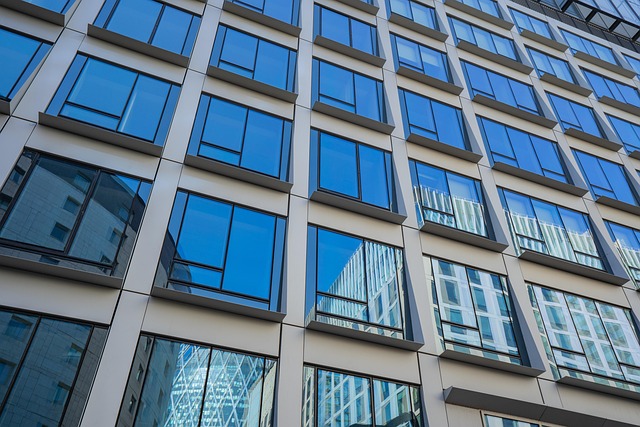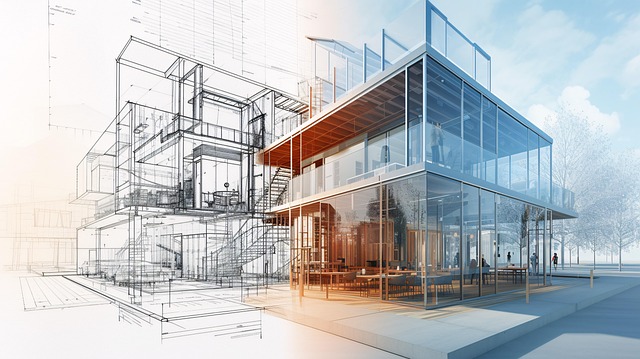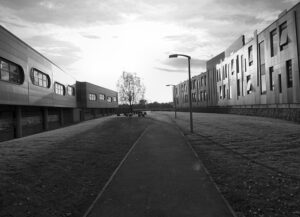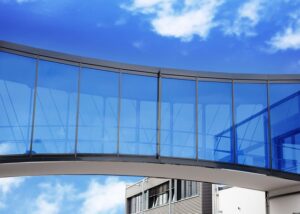Commercial destratification fans optimize temperature control in large spaces, reducing heating costs and enhancing energy efficiency through strategic air circulation. They balance cool air distribution, improving workplace comfort and minimizing hot spots, ultimately leading to substantial energy savings and a greener environment.
In the realm of efficient warehouse management, optimal airflow plays a pivotal role. This is where commercial destratification fans emerge as game-changers, offering a tailored solution for balancing temperatures and improving air quality. This article delves into the intricacies of these fans, exploring key factors in warehouse airflow management and uncovering energy efficiency strategies that can significantly enhance operational sustainability. By understanding these aspects, businesses can harness the power of commercial destratification fans to create a more comfortable and productive environment while reducing energy costs.
- Understanding Commercial Destratification Fans
- Key Factors in Warehouse Airflow Management
- Energy Efficiency Strategies for Warehouse Ventilation
Understanding Commercial Destratification Fans

Commercial destratification fans are specialized cooling solutions designed to address a unique challenge faced by many businesses: maintaining temperature uniformity in large, open commercial spaces like warehouses, office buildings, and retail stores. These fans operate by drawing cool air from lower levels and distributing it across the entire space, helping to balance out the natural heating effects of lighting, equipment, and even sunlight.
By utilizing destratification fans as part of HVAC optimization strategies, businesses can achieve significant energy efficiency gains. Unlike traditional ceiling installations that focus on direct air circulation, these fans promote vertical mixing, ensuring cool air reaches every corner of the building. This not only enhances workplace comfort but also leads to substantial heating cost reduction. Efficient air circulation systems in commercial buildings, be it a bustling warehouse or a modern office space, can contribute to a greener and more economically viable environment.
Key Factors in Warehouse Airflow Management

Managing airflow in commercial buildings, from warehouses to retail stores and office spaces, is a complex task that requires careful consideration of several key factors. Commercial destratification fans play a pivotal role in achieving optimal temperature uniformity across these large spaces, ensuring workplace comfort without compromising energy efficiency. One of the primary aspects to focus on is HVAC optimization, where strategic placement and control of air circulation systems can significantly reduce heating cost reduction while maintaining ideal working conditions.
Additionally, when considering warehouse airflow management, the ceiling installation height and the overall architectural layout influence air circulation patterns. Proper destratification fan selection and operation help balance these factors, ensuring efficient temperature regulation throughout the entire building, including hard-to-reach corners. This balanced approach not only enhances energy savings but also contributes to a more comfortable environment for occupants in commercial buildings.
Energy Efficiency Strategies for Warehouse Ventilation

In commercial buildings, including warehouses, retail stores, and office spaces, implementing energy-efficient ventilation strategies is a game-changer for maintaining temperature uniformity while reducing heating cost reduction. One effective solution lies in the utilization of commercial destratification fans. These fans are specifically designed to enhance air circulation systems by moving cool air closer to the workplace, thereby improving overall comfort without excessive energy usage. By focusing on targeted cooling, destratification fans optimize HVAC (Heating, Ventilation, and Air Conditioning) operations, ensuring that every square meter of the space benefits from efficient temperature regulation.
Moreover, the strategic placement of ceiling-mounted destratification fans can significantly improve air circulation in large commercial spaces. This not only contributes to energy efficiency but also plays a crucial role in maintaining optimal air quality, which is essential for workplace comfort and productivity. By balancing airflows effectively, these fans help mitigate hot spots and cold zones, creating a more comfortable environment without the need for excessive heating or cooling, ultimately leading to significant savings on energy bills.
Commercial destratification fans play a pivotal role in optimizing warehouse airflows and reducing energy consumption. By understanding the key factors that influence warehouse ventilation, businesses can implement effective energy-saving strategies. Utilizing these efficient cooling solutions allows for better temperature control, enhances worker comfort, and contributes to significant cost savings without compromising performance. Embracing advanced destratification fan technology is a smart step towards a greener and more economical future for warehousing operations.






